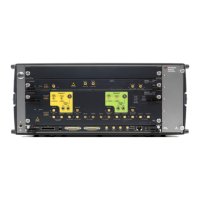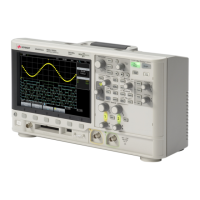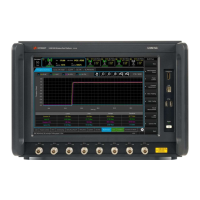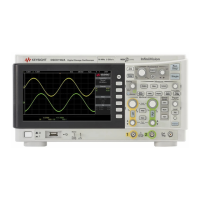358 Keysight M8000 Series of BER Test Solutions User Guide
7 Setting up Patterns
Pattern Overview
The purpose of data patterns is to simulate the type of data that your
device might receive in the real world. Different patterns present different
data loads to your instrument, which can cause variations in the bit error
ratio. A bit pattern is sent from the generator to your device. At the same
time, the expected output pattern of your device is internally generated in
the analyzer (to provide a reference).
The M8041A and M8051A modules supports 2 Gb pattern memory per
channel (requires M8070A software 1.5 or above).
The M8045A and M8046A modules support 2 Gb pattern memory per
channel (requires M8070A software 3.7 or above)
Selecting a pattern is the first step in setting up a BER measurement. The
M8020A/M8030A provides various patterns to fulfill most standard testing
needs. The M8020A/M8030A modules support the following types of
patterns:
•PRBS
•Pulse
•Clock
• Static
• Memory Patterns
The M8040A modules support the following types of patterns:
• PRBS (supports all except for 2^7-1 on analyzer)
• Pulse (supports for NRZ, doesn't support for PAM4)
• Clock (supports for NRZ, doesn't support for PAM4)
• Static
• Memory Patterns
Patterns consist of a sequence of symbols. A symbol can have the
following type of coding:
• Binary (Bit)
• 8B/10B
• 128B/130B
• 128B/132B

